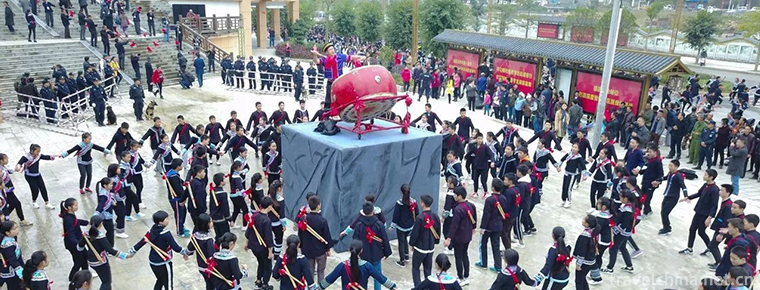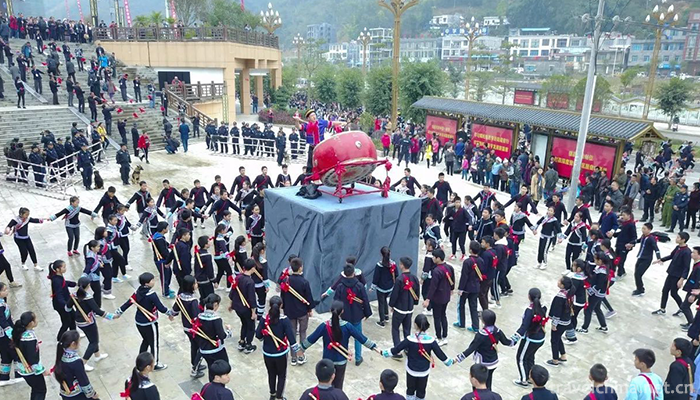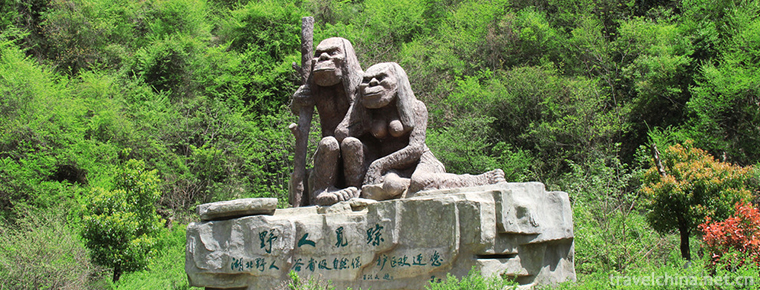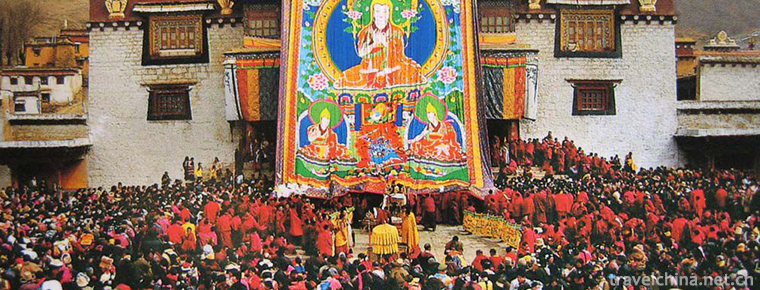2018-10-28

- By ChinaWiki.net
- Chinese Edition
- 2019-04-30
Buyi People's Changing Dance
The Bouyei people, who can sing and dance well, have created colorful Bouyei culture. Buyi people like singing and dancing to express their feelings whether they work in the fields or in daily life. One of the most important dances of the Buyi people is the transitional dance.
Transfer dance has a profound historical origin, and the cultural connotation is immeasurable, so let's look at the Bouyei Transfer Dance with a strong national color together with Xiaobian.
Buyi transfer dance, which is called "blare" in Buyi language, is a traditional dance spread in Buyi villages in Ceheng County, Guizhou Province. Every year from the thirteenth to fifteenth day of the first lunar month, men, women and children in Buyi villages gather in costumes to dance in the Village Sun dam farm. From its traditional performance program, it includes four aspects: sacrifice, opening invitation, situational performance and jumping field. There are eight traditional movements in turn dance.
Legend has it that during the reign of Kangxi in the Qing Dynasty, Wang Bao Sai Zhai, the owner of the Dazhai near Chenhengwei, led the villagers to fight back the invaders and become leaders, often bullied the people, so that they could not live. In the mid-winter of Kangxi's forty-eight years, everyone hated a fire that turned the village's owner's home into ashes. My heart was very happy, they were all singing and dancing around the big firearm. Later, after sacrificing Wang Bao Competition, the dance began. In the development of more than 300 years, I do not know when the dance began to spread slowly to the Buyi villages in Ceheng.
Transfer dance is a kind of dance produced by the struggle in Buyi villages under the Tusi system. This kind of dance is warm and unrestrained, relaxed and performing. Buyi people dance around the spring ploughing season to pray to the gods for good luck in order to achieve a smooth year of farming and a bumper harvest. By dancing on the dance floor, Buyi people can learn some of their national history, culture, customs and habits, and receive thanksgiving, respect, unity and other education.
Transfer dance contains many elements of Buyi people's beliefs, social etiquette, life attitudes, moral concepts, educational methods and so on. It has important research value for Buyi people's history and culture, folk customs, ethnic groups, dance and other disciplines. Protecting and inheriting the improved dance is very important for building local Buyi people's national self-esteem, self-confidence and pride, and building a harmonious society. Significance.
Nowadays, the Buyi transfer dance has gradually changed from ritual dance to aesthetic entertainment dance, which is popular among the Buyi people. The Buyi transfer dance has been inherited and protected in 16 primary and secondary schools in the county. It has set the "Shanghai Great World Guinness Record" by organizing the "Wan Wan Buyi transfer dance", which has a great influence in the Buyi area. However, due to the impact of the general environment, we are facing the danger of dying out.

Ask a Question
Your email address will not be published.



0 Questions